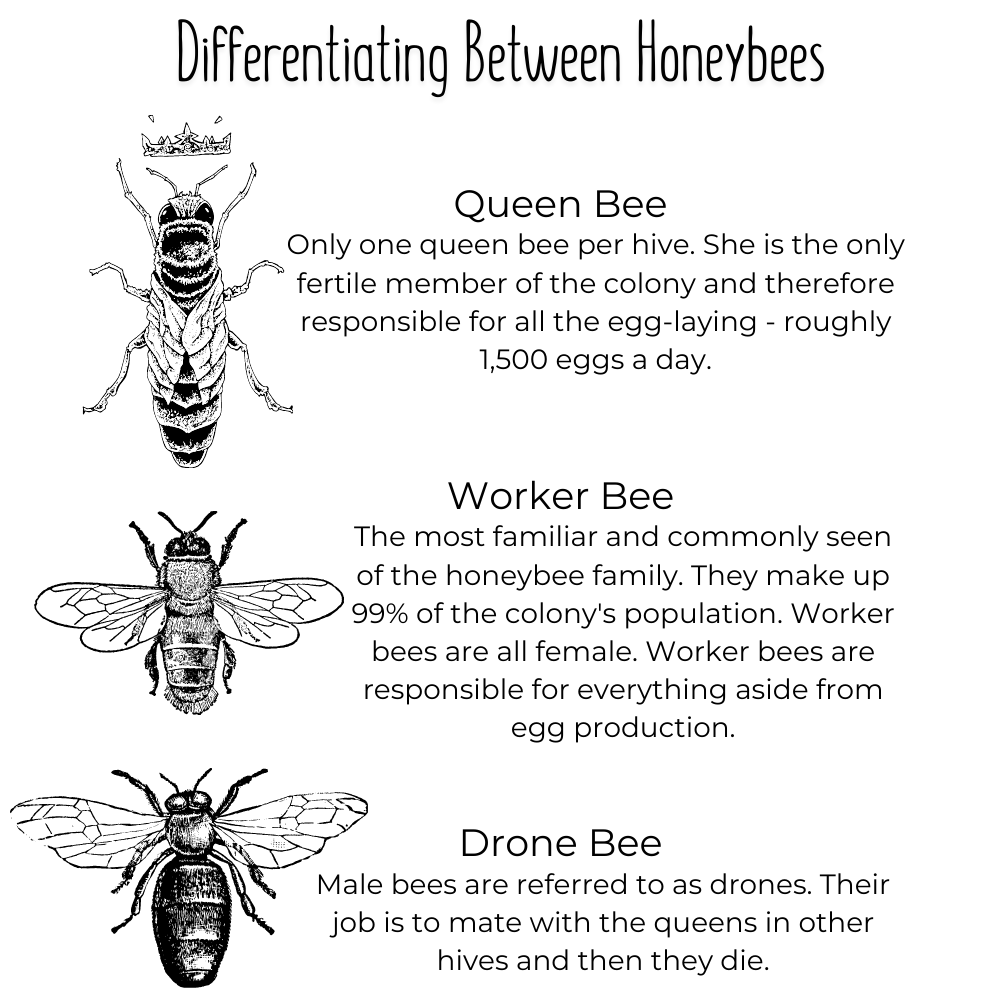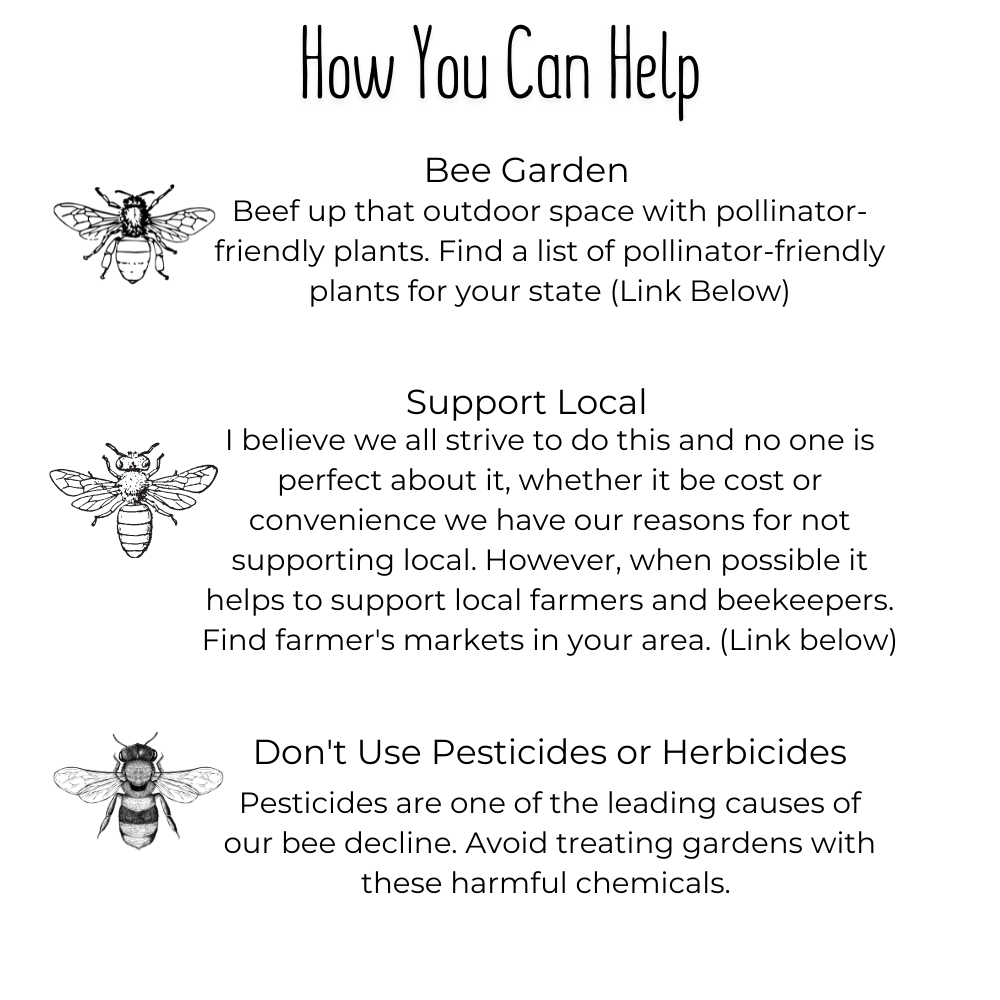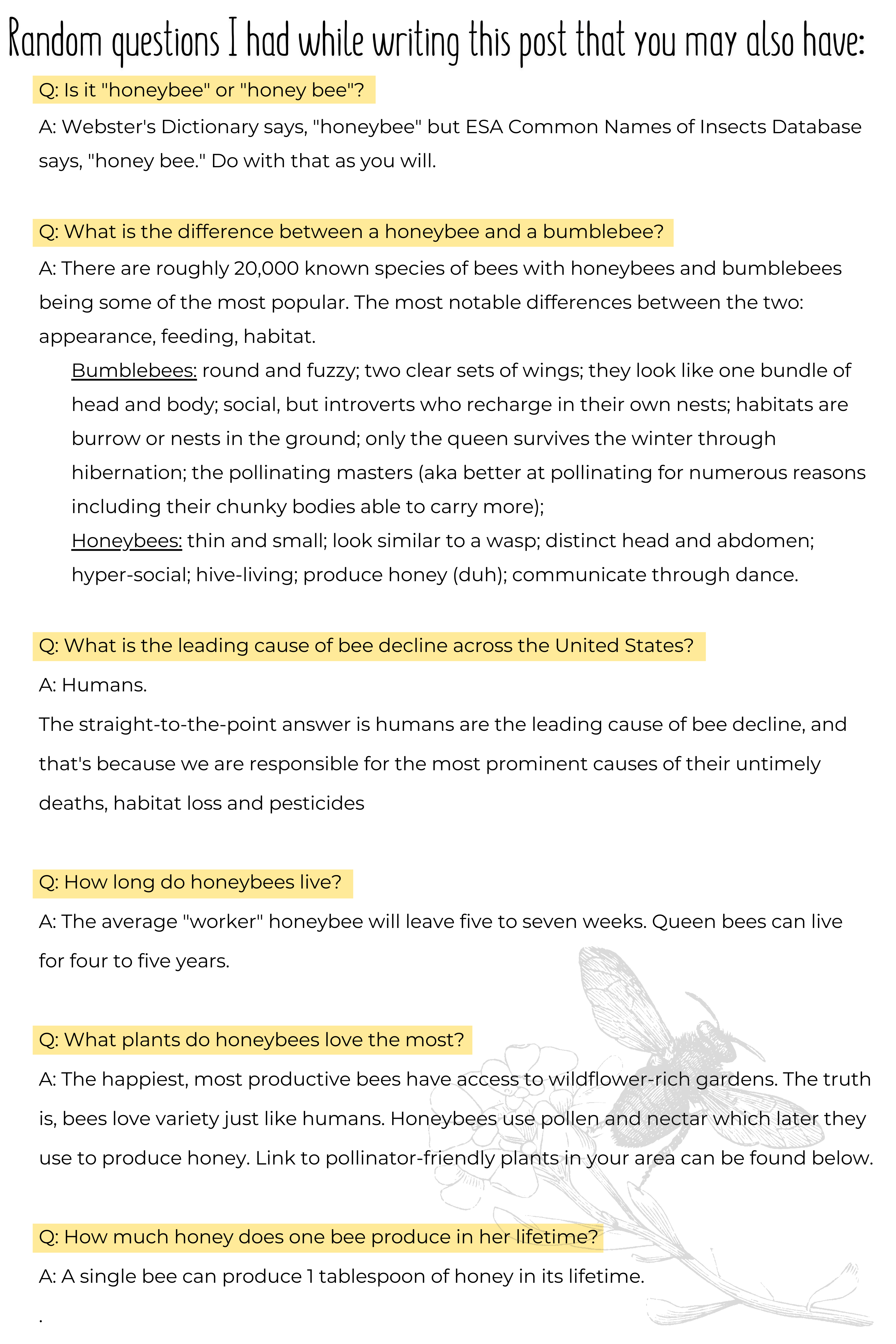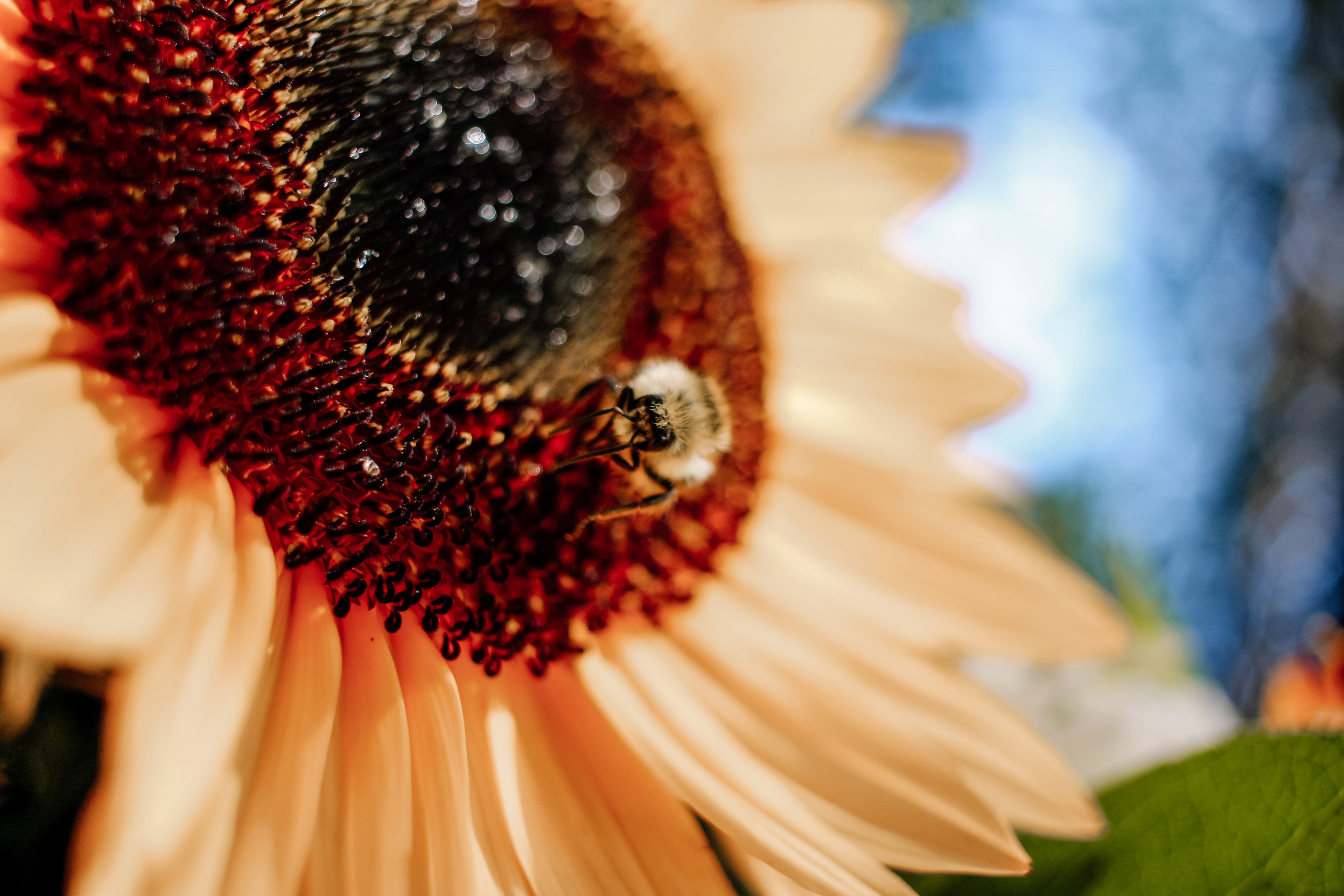The Honeybee | Apis Mellifera
Science tells us that bees love caffeine and they are the contributors to production of the coffee bean, in other words, they are Angels on Earth. If those two quick facts are not enough for you to be obsessed with bees, just look at their tiny-little fluffy booties. Seriously, have you ever really looked at a bee before? They are some of the cutest creatures on this earth. And if you have the time to read this post you have the time to look at some of the adorable photographs that people have captured of bees covered in pollen. When I see those photos, I think of a Golden Retriever puppy freshly mud-soaked after rolling around in a puddle, happier than ever, satisfied, just to be alive; or a child who just got caught sneaking some Halloween candy, the lighthearted expression that spreads across their face saying I know I’m cute.
Find those adorable pollen covered photographs from National Geographic | Here.

Aside from being adorable, bees are critical for life as we know it.
Social insects to the extreme, these amazing bundles of pure perfection are the reason us humans have 80% of the crops we do. According to the USDA, “honey bees are responsible for one in every three bites of food we take” and humans have relied on bees for over 9,000 years. In fact, bees have the potential to increase a farmers crop yield by 100%!, doubling the amount of food produced each season. Is that not insane? And 90% of all flowering plants require pollinators to survive. You know what foods bees provide? The best kinds! Bees provide us with almonds, cherries, avocados, raspberries, watermelon, cucumber, pumpkin… honestly, all of the delicious food I live on.

Now that we know how important these little fluffy bundles are to the planet’s existence, let’s get into some seriously concerning facts.
No, bees are not on the endangered species list. However, some species among the most important of pollinators, specifically bumblebees, are dropping significantly. Moreover, several once-common species have become locally extinct in areas they once thrived.
Here are the leading causes of bee decline:
- Large-scale agriculture and the use of pesticides, which either kill the bee outright or cause significant damage to the bees ability to survive.
- The climate crisis is contributing substantially to their decline, causing significant increases in temperature in areas of the world where bees are not accustomed. Honeybees can withstand temperatures of up to 100°F and as low as 55°F. They have methods for both cooling themselves and heating themselves, but unprecedented and substantial periods of dramatic temperature change will cause death.
- Habitat loss means less shelter and food for the bees. A combination of both urban agriculture and large scale crop production are both to blame for this issue. Large fields yielding the same crops (i.e monoculture) contribute to soil erosion and pesticide use. Additionally, it is important that bees have abundant food sources and safe spaces to use for nesting, but since World War II we’ve lost 97% of wildflower meadows leaving bees with far less natural habitats.
Learn more about how bees regulate their temperature from Beepods | here.

Cute-ass video and photos I captured at Purple Haze Lavender Fields of a honeybee filling her “saddlebags” or pollen pallets.
More on the Purple Haze Lavender Fields | Here.
Long hair on the bees legs allow for them to collect the pollen and nectar (which accounts for 30% of the bees weight) and carry it back to the hive.


Find a list of pollinator friendly plants for your state from Xerces Society for Invertebrate Conservation | here.
Find farmers markets in your area thanks to USDA: Local Food Directory | here.
Make a Bee Bath

As you can imagine bees are on the grind day-in and day-out, and just like us they get famished and thirsty.
A bee bath is essentially a bee drinking fountain and a refreshing spot for them to rest. It doesn’t just help the bees, a bee bath can benefit your garden as well, by attracting these very important pollinators to your plants – happy bee, happy bloom.
Making a bee bath is a simple method to make a difference right NOW. What you need:
- Shallow bowl (avoid using plastic)
- Water
- Pebbles, river stones, and/or marbles
Add water to shallow bowl, placing pebbles, stones, and/or marbles so there is a safe surface area above the water. The bees use the surface area for a landing, hangout, drinking spot. If possible place your bee bath in an area of your yard that is bee-popular and shady.
Learn more about how you can help the bees from The Bee Conservancy | Here.

Want more books on bees? Check out A Honeybee Heart Has Five Openings author Helen Jukes list of “The Best Books on Bees” | Here.
More Podcasts for a deeper dive “7 beekeeping podcasts to listen to in 2021 rated by a beekeeper” by Alfredo Salkeld | Here.

“People tend to identify readily with large fauna, but over 99% of life on Earth is smaller than your finger, and those things are so incredibly important.” – Clay Bolt


Just Can’t Get Enough of the Bees?
Here are some resources I used for this post and additional sources I found fascinating:
- http://www.honeybeecentre.com/learn-about-honeybees#.YPn4OI5KiUk
- https://www.heifer.org/bees/index.html
- https://www.sciencemag.org/news/2017/11/honey-bees-fill-saddlebags-pollen-here-s-how-they-keep-them-gripped-tight
- https://www.nationalgeographic.com/science/article/honeybees-honey-insects-pollen-agriculture
- https://www.thesca.org/connect/blog/bumblebees-vs-honeybees-what%E2%80%99s-difference-and-why-does-it-matter?gclid=Cj0KCQjw0emHBhC1ARIsAL1QGNcfvjgsnbwGa41Tt_2hI5T6FaUq4zVDqYJA-8gzs45thxidwLOp3D8aAsFjEALw_wcB
- https://www.nationalgeographic.com/animals/article/bumblebees-going-extinct-climate-change-pesticides
- https://friendsoftheearth.uk/nature/what-are-causes-bee-decline
- https://www.ehn.org/monoculture-farming-is-not-good-for-the-bees-study-2639154525.html




3 responses to “For The Love of Bees”
Awesome
I especially like how you included a list of pollinator friendly plants for each state. Very purposeful post. You are making the world a better place
Great write up on bee’s